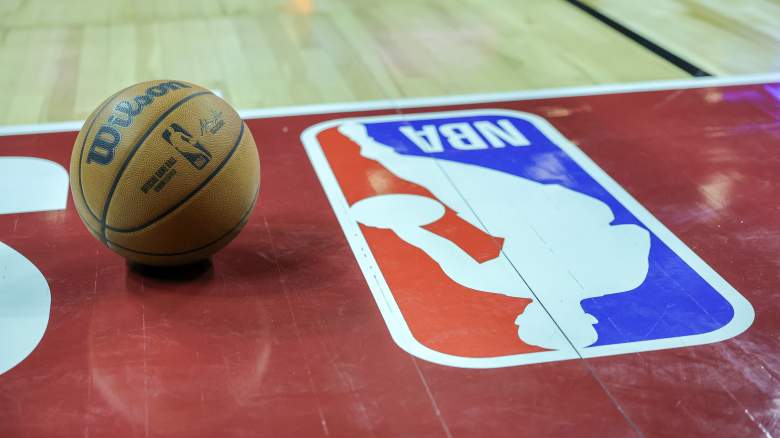
Getty Analytics remain a contentious issue in the NBA.
There is concern among many coaches and front office people that analytics are taking on too large a role in the NBA, with a number of those who spoke to Heavy Sports hoping the numbers remain a useful tool and not a final answer unto themselves.
Josh Hart famously said in 2021, “Obviously it has benefits, but there are a lot of things you can’t measure in numbers.
“Analytics are a lamppost for a drunk person. You can lean on them, you can rely on them, but they won’t get you home.”
This story serves as the prosecution on analytics, with Celtics vice president of basketball operations and team counsel Mike Zarren speaking for the defense in the companion piece. And while Zarren offers a measured and sober look at how statistics can play an important role in building a team, there are those more prone to voice frustration with the creeping numerology.
As one league executive told Heavy Sports, “Sometimes you’ve just got to say, ‘f*** analytics,’ and look inside a guy.”
How did mathematics make its way so strongly into the game? One front office source believes owners are more comfortable bringing their initial businesses into the basketball arena.
“Analytics is stats on steroids,” said a league exec. “What it’s done is created a new language. It’s the language of basketball intellectuals, and it’s language that the owners can understand. They understand ratios; they understand regression analysis, things of that sort, because they’re finance people. It’s basketball expressed in statistical terms that are often used in the world of finance to explain and predict and have predictive value for where we make financial decisions.
“I don’t have any problem whatsoever with analytics, but what I say to people is that analytics informs the decision. It doesn’t make the decision.”
Analytics Case-in-Point: Tobias Harris
A basketball lifer who has made his way up the ranks has found blind spots in using numbers to predict the future.
“Here’s a perfect example of something that analytics struggles to explain,” he said. “One of the guys who suffered in Philadelphia as a result of Ben Simmons no longer playing is one of their better players, and that’s Tobias Harris. Tobias had to be their sort of third-best player when Ben was playing. And when Ben sat down, he of course had to move up. So you would think, oh, more shots, more opportunity, more touches.
“The problem is that the best things he does are things he does off of the pass, off of the chemistry of ball movement, off the chemistry of player movement. Give him the ball and make him operate off the bounce, and he’s not as effective. Give him the ball in motion or where he gets to catch and shoot and shoot without a whole lot of dribbling, he is a much more effective player. And it takes only a couple of possessions a game where your opportunity is diminished to have a substantial impact on your stats. That’s chemistry.
“So you have to explain to me that you could have predicted that the guy who would suffer the most is your third-best player as opposed to your eighth player or sixth-best player.”
Coaches Know Advanced Stats Have Value
One coach told Heavy he tries to politely pick and choose what information he gives weight.
“Some of the stuff is really useful, but some of what you get handed is just crazy,” he said. “A guy might be shooting 50% from the floor, but he’s not a 50% shooter every night. There is too much that goes into it to just use the flat numbers. Who’s he playing with? Who’s he playing against? And those kind of things can change from possession to possession, especially with what switches you’re trying to create with your pick-and-rolls.”
The issue is even more acute for some when it comes to 3-point shooting. Attempts from beyond the arc have become more valued, with Joe Mazzulla and the Celtics among the shot’s more enthusiastic proponents.
But the variables can be bothersome.
“The whole 3-point mantra is far from foolproof,” said a longtime league exec. “There’s certainly a numerical value overall. The analytics tell you that. But long range shooting is cyclical. You cycle up and you cycle down. Nobody hits them at the prevailing rate all the time; people hit them in bunches.
“The problem is if the only shots you take in the last four minutes of the game are 3’s and you’re on a down cycle, you can shoot yourself right out of the game. You have to have some diversity in your offensive attack, so if one element of your attack isn’t working or a team has taken it away from you, you’d better have some counters.
“And if you develop your habits over 82 games, it’s hard to change all of a sudden. If you haven’t worked on it all season long, it’s hard for guys to just flip a switch. You have to have diversity in your game and then hope it comes through when the tension is at its highest, when the nervousness is at its greatest.”
Said the coach, “They have all kinds of clutch stats and s*** like that, and you definitely want to take a look and consider them. But looking at a guy and being able to read him in a timeout with five seconds left, there’s no spreadsheet for that.”